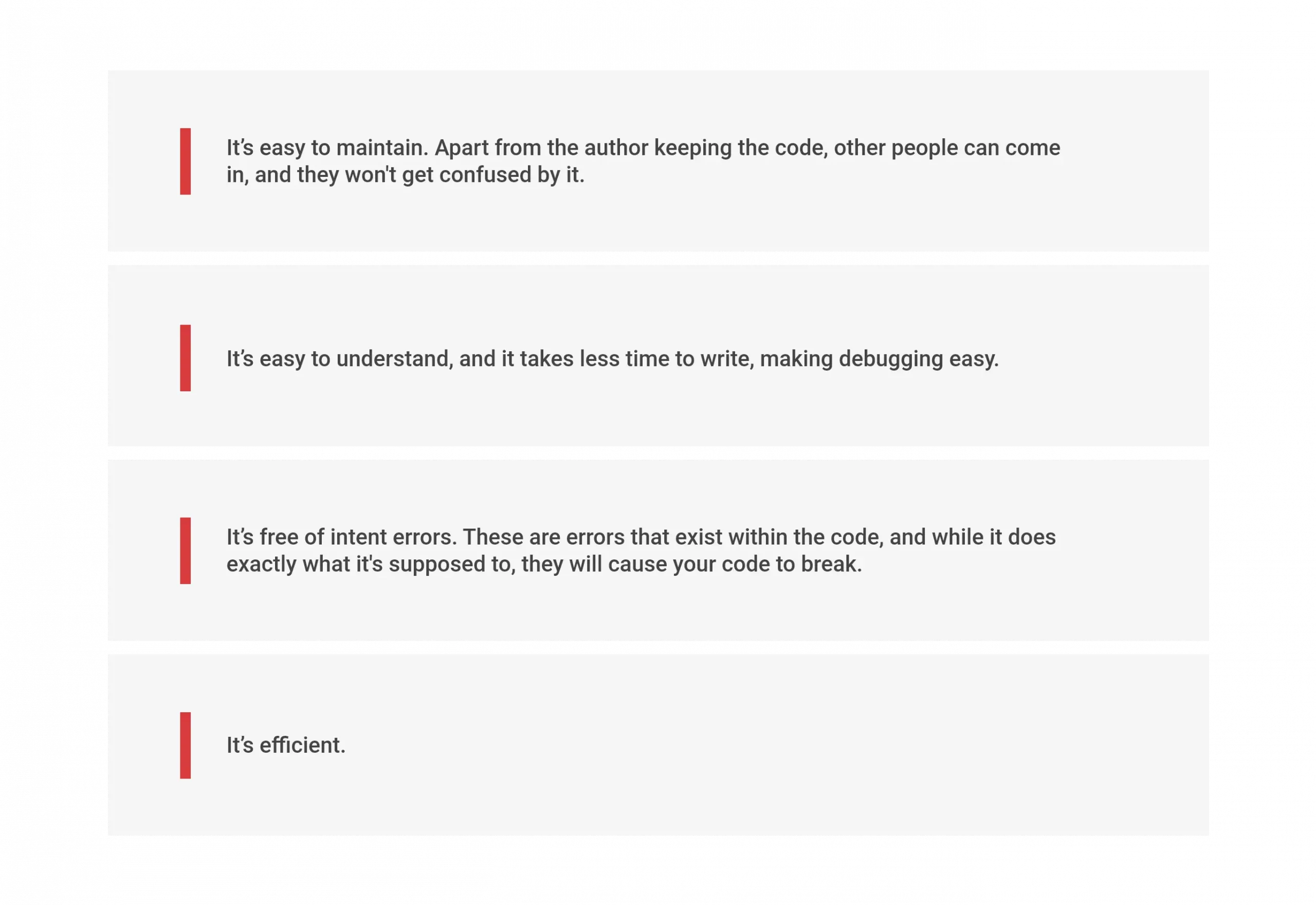If you are into training machine learning and data science, then you know that code can sometimes get jumbled up and messy. While code complexity is inevitable, it’s crucial that you categorize the complex ideas so that you can evolve the code. Essentially, machine learning code is written in Jupyter notebooks, which are chock-full of side effects and glue code.
The side effects include printed data frames, data visualizations, and print statements. Additionally, glue code lacks abstraction, automated tests, and modularization. As much as this is applicable to teaching people about ML learning, it’s pretty messy when it comes to real projects. Poor coding habits make the code difficult to read and understand, which becomes a problem to modify without making mistakes.
How do you know you have good code?

Adopting excellent coding standards will lead to fewer errors, resulting in more work and less time spent correcting and maintaining code. So, what are the best coding habits for data scientists?
Maintain a Clean Codebase
An unclean code is challenging to understand and even harder to modify. This makes the whole code quite complex to work with. One of the dirts in the code is ‘dead code,’ which is executed correctly, but its result is never used again. To keep your code clean, do not reveal the internal data in design. Avoid using print statements, and the variables should always indicate intent. Lastly, the functions should only do one thing, and most importantly, do not repeat yourself.
Use Functions
Functions make your code simpler by removing complex implementation details and replacing them with its name. That way, everything is well organized and concise, removing any chance of clutter in the code. Because the code is short and clear with precise functions, it becomes easier to read, test and reuse. Instead of having several lines of code for the same thing over and over again, using functions gets rid of code entanglement.
Use an Integrated Development Environment (IDE)
While Jupyter notebooks are great for making prototypes, that’s where many data scientists make the most errors. Coding on the platform for ML learning tends to get messy, as many people include stack traces, unused import statements, glue code, and even print and glorified print statements.
The notebooks give us swift feedback when dealing with a new string of code, which is important. Even so, as the code grows longer, it becomes harder to get feedback on whether the changes made are actually working.
The solution to this is to shift to integrated development environments which will help you write better code. Most of them have inbuilt functions that can highlight errors, autoformat your code, highlight syntax and automatically check up functions. IDEs also have several debugging tools, ensuring that your code is free of bugs without filling it with print statements.
Migrating the code to IDEs will also help with unit testing, which gives you instant feedback on applied changes despite the number of functions.
Use Descriptive Function Names
One way to know a clean, well-written code is if someone who has no clue about programming can understand what’s happening. Using descriptive and precise variable names will help anyone with programming language knowledge know and follow through. Create your code in a self-documenting way, making it easy to follow and modify if necessary.
Adapt Unit Tests
Instead of writing unit tests after doing the entire code, what if you do it while in the process of coding? Yes, there’s a misconception that you cannot use test-driven development while working on machine learning projects. Still, that’s untrue since a big part of the codebase is concerned with data transformations, and only a tiny bit of code is actual machine learning. Using test-driven development helps disintegrate huge, complicated chunks of data transformations into smaller, manageable bits.
As you write your code, it’s vital that you also incorporate a set of automated tests that verify the operation of the function. The beauty of most languages is that they have automated frameworks for this purpose. R has a framework called testthat; Python has a module called unittest, and Java has junit.
Writing unit tests will go a long way in predicting how the code will behave, and you will be able to spot any bugs that creep in with the changes you make. Other people involved with the codebase development will also be able to modify it appropriately since they know what to expect, all from the embedded unit tests.
Use A Consistent Coding Style
When coding for machine learning, it’s important to choose a specific coding style and stick with it. This will help you avoid unnecessary errors, making your code clean and easy to understand. Using a consistent style with your team helps with teamwork since every member of the development team knows what is happening with the code and what to change if need be. Mixing the styles will spell disaster, resulting in a complex, messy code.
Practice Logging
After running the first version of your code, it’s vital that you track its progress. Logging helps with knowing exactly what each level holds. If you’re debugging the code, you can only display debug messages, and if you only want info or warning messages, you can also specifically log those.
The advantage of logging is that you can leave the logs embedded within the code, so you know exactly what to fix if problems arise. Compared to print statements which complicate the codebase, logging keeps everything simple and sorted out. You can also reroute your logs to files to keep track of execution times, data quantities, and other metrics.
Keep Proper Documentation
Maintaining updated records of the code is essential, as it helps simplify the complicated segments. This comes in handy when you need to explain the specific code components or their purpose to your team members. The three types of code documentation are:

This keeps the workflow efficient, especially when working with AIML.
Adapt Small, Frequent Commits
If you’re not making frequent commits as you code, you’re settingh yourself up for an overload. Once you make the changes in the code, as you work on a specific problem, the previous changes will appear as uncommitted. This creates more confusion which takes you away from solving the issue at hand.
Making small, frequent commits keeps you grounded, and you can concentrate on the particular issue without visual distractions. You also need not worry about unintentionally breaking the codebase since the previous changes will already be committed. Frequent commits also help you revert to the latest commit and check if there’s a problem, giving you a chance to retry. This saves you time that you’d have spent undoing the accidental damage in the code.
Incorporate Docstrings
Sometimes, even you, the author, don’t fully understand it when writing complex code. As such, it’s important that you include docstrings. These are distinctive comments that you embed in the methods, functions, or classes.
They are simply short notes about the code that you can come back to in the future. Including docstrings in the codebase helps generate automated documentation, especially when using IDEs. These will help you when you need to modify the code and cannot remember a specific function.
Maintain a Version Control System
Another excellent coding habit is to have a version control system. With this system, you can roll back to a previous version and incorporate more people into the project, as well as make changes to a code without affecting the older version.
Data science coding involves a lot of experimentation, and having version control helps a big deal with trying out different things. It’s easy to save two versions of a codebase and compare their functionality, giving you more leeway to play around.
Conclusion
These are the habits we have cultivated to make sure we manage our data science tasks seamlessly. You may already be practicing some of them, but we recommend incorporating all of these into your workflow. They make your work easy to manage while at the same time ensuring that the people you work with understand your code in case modifications are required. No one wants to deal with complex, messy ML models, and a clean code guarantees more work being delivered to your clients. At TVS Next, we work to provide high-end intelligence and engineering solutions for your business. We develop our softwares to give you the ultimate, unforgettable experience, set to reimagine and build a better future.













